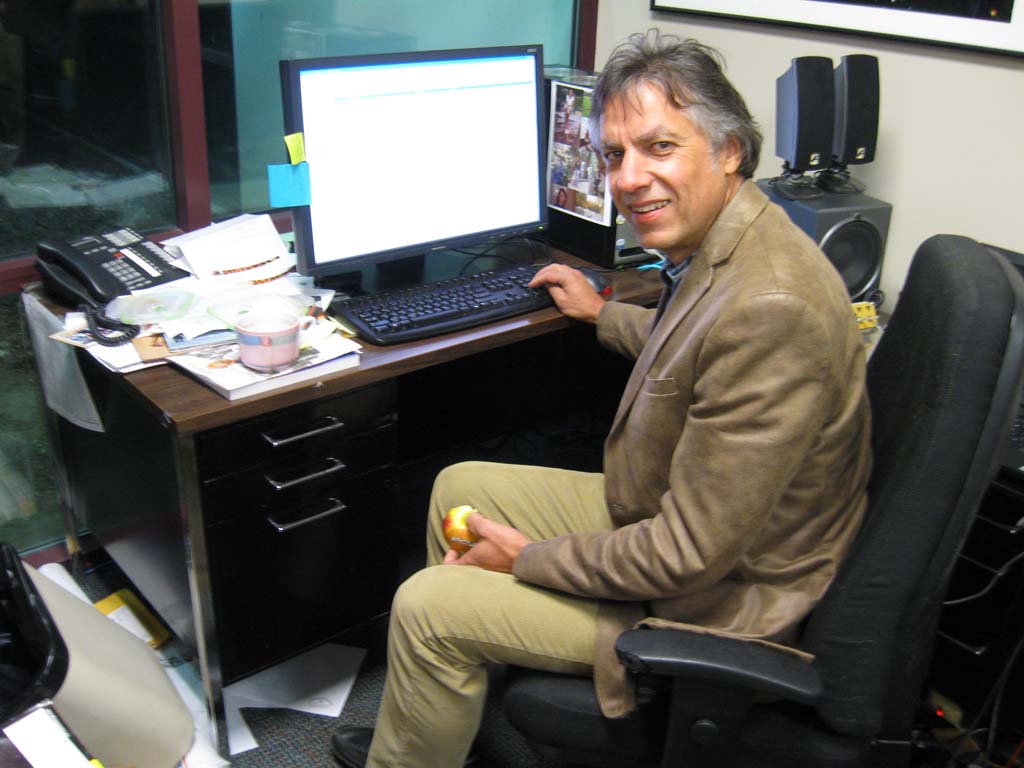
Cal Poly 18 Bulletin 08
2012-02-08: Final Tests, then Moving Day!
Here's Dan at his computer getting SiTech.exe 0.90 ready for release.

Here's how we did indoor testing at TMS. There isn't much space, but the Cal Poly can swing to any position without hitting anything. To test on the sky, the overhead door is opened, the Cal Poly is picked up by the forklift and carried about 80 feet from the building. After we string a power cord and one control cable, we go inside and run the scope remotely.
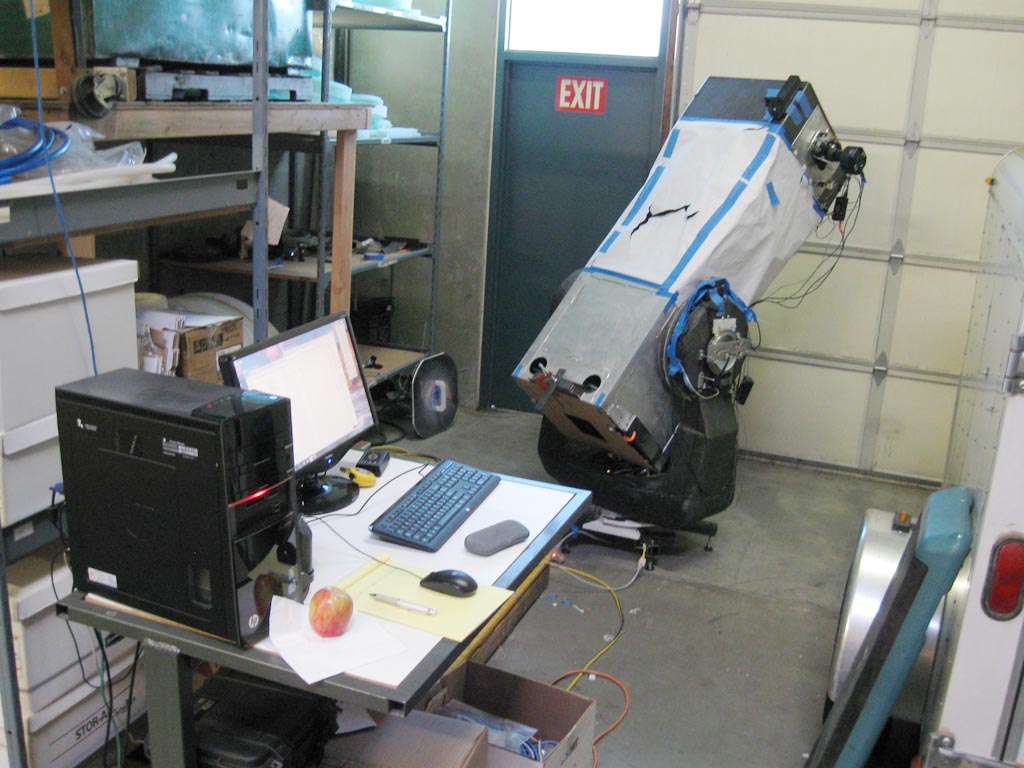
Special thanks to the SiTech/TMS crew! Dan Gray (right), Ed Harvey (second from right), and Greg Rohde (left). I'm the guy hiding behind the truss tubes. The space occupied by the Cal Poly will shortly be occupied by Dan's "Lollipop" telescope.
2012-02-03 and -06: Last Images at TMS
On 2012-03-03, Dan rolled out the Cal Poly and shot sequences of image for least six satellites. If he makes movies, I'll post links to them here.
To be honest, we don't know what's going on here. After setting up the Cal Poly, Dan left the Cal Poly making 10-second exposures while he took Samantha to dinner. The image above is the average of 256 images made over a span of 66 minutes. I have assumed these trails are the result of a bad pointing model, but that's only a guess. We've since discovered that the three bolts on the end of the altitude axis opposite the encode were loose, allowing the axis to flop around by a few millimeters. If that happened while building a pointing model, it would certainly compromise both pointing and tracking. The images that follow, made three nights later using a new model, show excellent tracking.
On 2012-02-06, preparatory to certifying me ready to fly solo, Dan gave me intensive "How to use SiTech software" lessons. Here are a few of the images we shot...
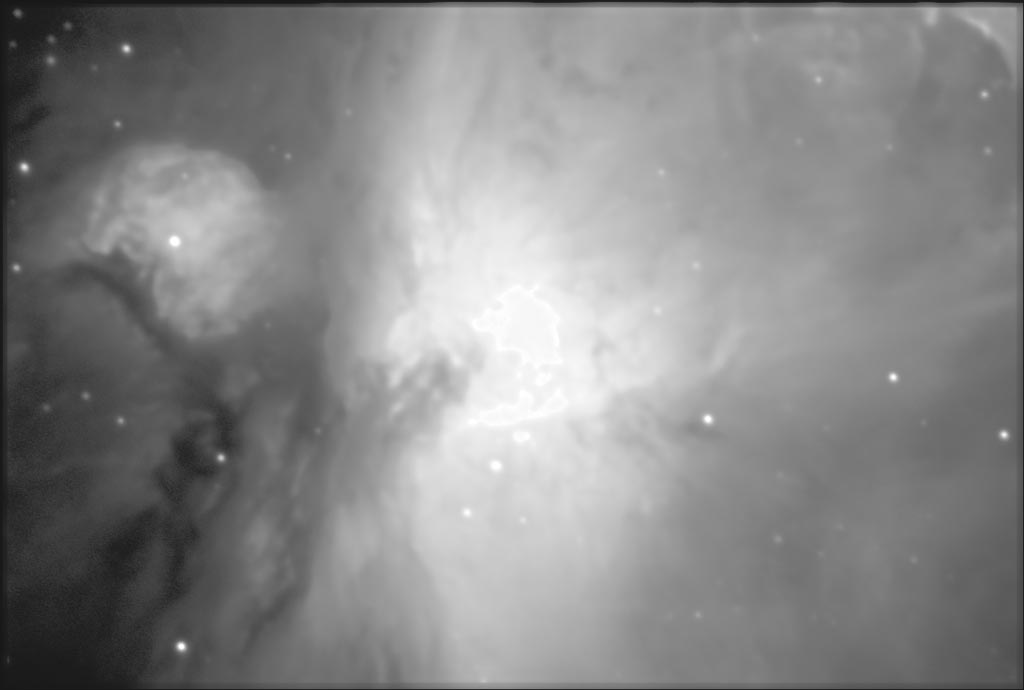
After setting up, we left the telescope tracking on the Orion Nebula and went for dinner. When we got back, we found that it had stopped tracking but left no diagnostic traces. We refocused and re-acquired the object while shooting pictures, and then watched it another hour waiting for it to do something odd again. The re-acquired images matched closely with the original ones, just as well as if it had been tracking the whole time, so there's a "mysterious stop tracking" bug of some sort lurking in the code.
Above is a snip from one of the images taken while the telescope was not tracking. The displacement is almost certainly due a strong gust of wind, but you'll notice that the telescope responded by maintaining its position. This is one of the eerie characteristics of the Cal Poly: you give it a shove and it pushes back! The design resonant frequency of the Cal Poly is above 10 Hz, so its response is fast and strong. When the poer is cut, however, the telescope goes boneless, moving freely in any direction at the slightest touch.
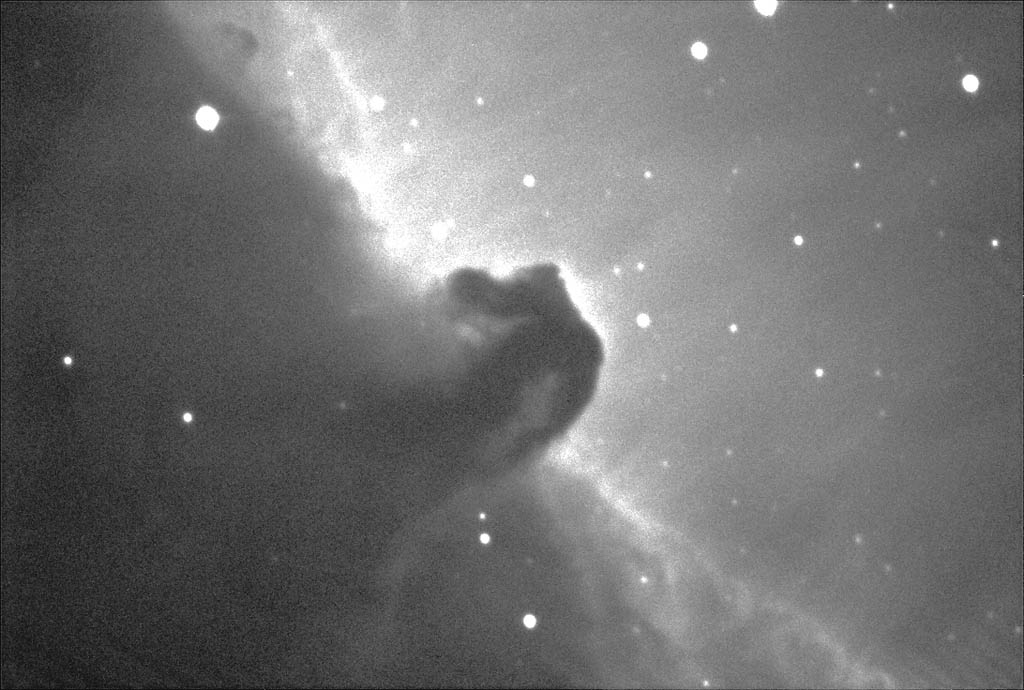
With the city lights of Portland a few miles away, and with the Full Moon shining in a cirrus sky, here's the Horsehead Nebula. This image was made from six exposures of 120 seconds each with my QSI 532ws CCD camera binned 2x2, through an Orion 7 nm H-alpha filter. The telescope was tracking open loop (i.e., no guiding) and the six images stacked without alignment as you see them above. When everything works, it works very well indeed.
Moving Day: 2012-02-08
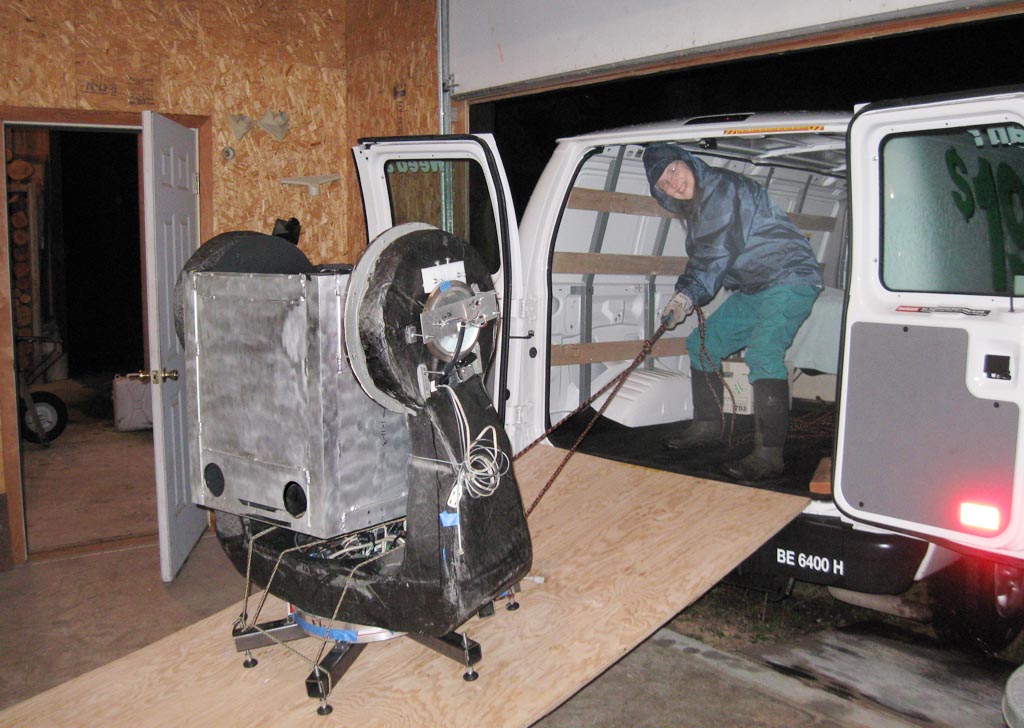
To carry out the move, I rented a U-Haul cargo van for the day. The door height is 49 inches; the height of the base and fork assembly is 47 inches. At the time we were unloading, it was raining cats and dogs: that's why Eleanor is wearing a rain jacket. Even though I backed right to the overhead door of my shop, we still got wet. The base, fork, and lower tube assembly you see on the ramp is quite heavy. In this picture, Eleanor Berry checks any potential runaway sliding. My job was to pull the telescope down; hers was to prevent it. The 3/4-inch plywood sheet rests on four 12-foot-long Dougles fir 2x6s, and you can see that the ramp looks a bit saggy under the load.
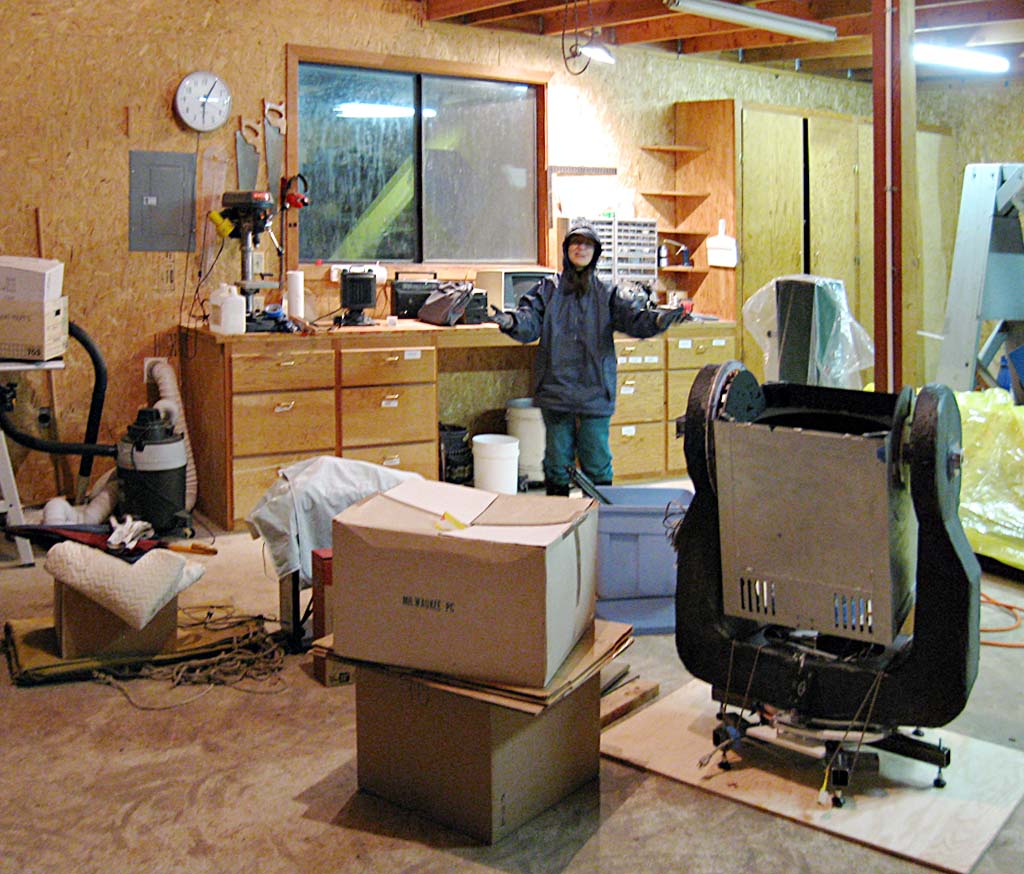
All parts present and accounted for! I will carry out a multitude of small but necessary tasks (like shimming the altitude axis and tightening its bolts), then I'll re-assemble the telescope and test everything in the shop. When it's all working, I'll roll it about 75 feet to the temporary shelter for trial runs under the sky, and then get started with some real observing runs.
This is Cal Poly Bulletin 08
Main CalPoly Bulletin page or go back to Bulletin 07
Return to Richard Berry's Home Page